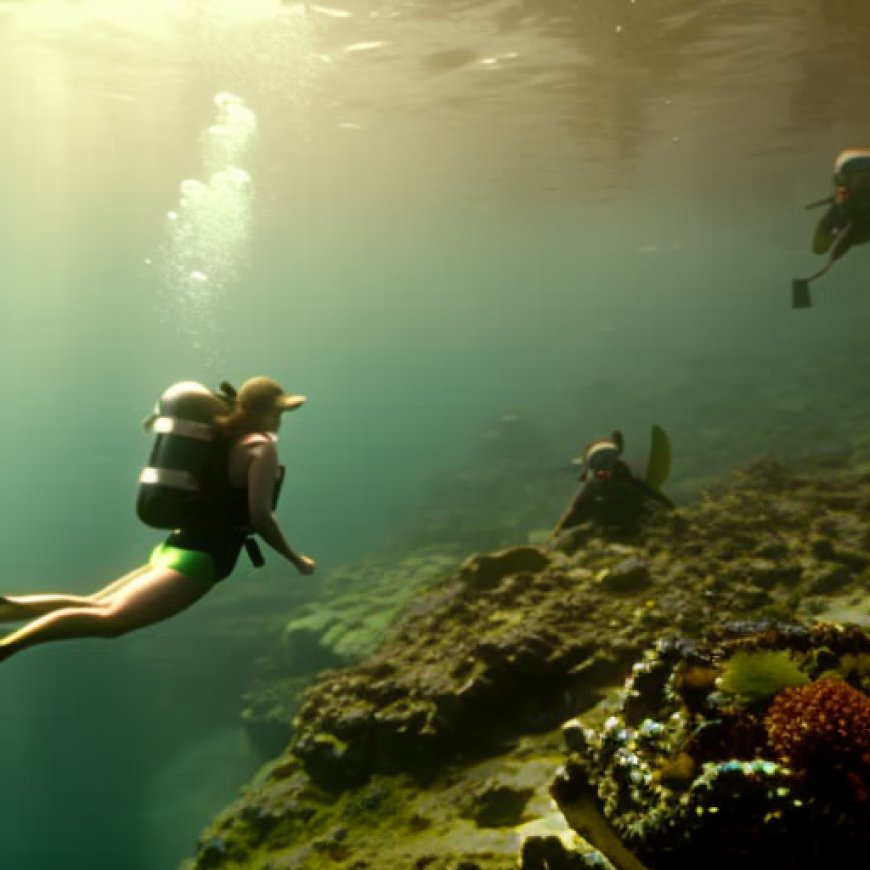Diving into Aquatic Microbial Ecology and Evolution with Anne Thompson
Diving into Aquatic Microbial Ecology and Evolution with Anne ... Portland State University


Researching the Diverse Ecology of Microorganisms in Earth’s Oceans
Introduction
On this episode of PDXPLORES, we delve into the fascinating world of microorganisms found in Earth’s oceans. Our guest, Assistant Professor of Biology, Anne Thompson, shares insights from her award-winning research work in this field. Thompson’s research focuses on studying the diverse ecology of microorganisms and their impact on oceanic food webs, carbon flow, and cell interactions within aquatic ecosystems.
The Significance of Sustainable Development Goals (SDGs)
The Sustainable Development Goals (SDGs) play a crucial role in guiding Thompson’s research. By aligning her work with these goals, she aims to contribute towards a sustainable future for our planet. The SDGs provide a framework for addressing global challenges such as climate change, biodiversity loss, and environmental degradation.
Examining Microbial Mortality Impacts
Thompson’s research investigates the effects of microbial mortality on the structure of oceanic food webs. By understanding how microorganisms interact and compete for resources, she uncovers the dynamic patterns of nutrient and energy abundance within diverse aquatic ecosystems. This knowledge is essential for developing strategies to protect and sustain these fragile ecosystems.
Carbon Flow and Cell Interactions
In addition to studying microbial mortality impacts, Thompson also explores the role of microorganisms in carbon flow and cell interactions. These processes are crucial for maintaining the balance of nutrients and energy within aquatic ecosystems. By studying these interactions, Thompson contributes to our understanding of the intricate web of life in the oceans.
Stay Updated with PSU Research
If you’re interested in staying updated with the latest research from Portland State University, be sure to follow PSU research on Twitter: @psu_research and Instagram: @portlandstateresearch.
SDGs, Targets, and Indicators
1. Which SDGs are addressed or connected to the issues highlighted in the article?
- SDG 14: Life Below Water – This SDG focuses on the conservation and sustainable use of the oceans, seas, and marine resources.
- SDG 15: Life on Land – This SDG aims to protect, restore, and promote sustainable use of terrestrial ecosystems, sustainably manage forests, combat desertification, halt and reverse land degradation, and halt biodiversity loss.
2. What specific targets under those SDGs can be identified based on the article’s content?
- SDG 14.1: By 2025, prevent and significantly reduce marine pollution of all kinds, particularly from land-based activities, including marine debris and nutrient pollution.
- SDG 15.5: Take urgent and significant action to reduce degradation of natural habitats, halt the loss of biodiversity, and protect and prevent the extinction of threatened species.
3. Are there any indicators mentioned or implied in the article that can be used to measure progress towards the identified targets?
Yes, the article mentions the research work of Anne Thompson, which focuses on studying the diverse ecology of microorganisms found in Earth’s oceans. This research can contribute to measuring progress towards SDG 14.1 by examining the impact of microbial mortality on oceanic food webs and carbon flow, which are factors contributing to marine pollution. Additionally, understanding cell interactions within aquatic ecosystems can help in assessing the health and biodiversity of marine habitats, which is relevant to SDG 15.5.
SDGs, Targets, and Indicators:
| SDGs | Targets | Indicators |
|---|---|---|
| SDG 14: Life Below Water | 14.1: By 2025, prevent and significantly reduce marine pollution of all kinds, particularly from land-based activities, including marine debris and nutrient pollution. | Research on microbial mortality impacts on oceanic food webs and carbon flow. |
| SDG 15: Life on Land | 15.5: Take urgent and significant action to reduce degradation of natural habitats, halt the loss of biodiversity, and protect and prevent the extinction of threatened species. | Study of cell interactions and their impact on nutrient and energy abundance within diverse aquatic ecosystems. |
Behold! This splendid article springs forth from the wellspring of knowledge, shaped by a wondrous proprietary AI technology that delved into a vast ocean of data, illuminating the path towards the Sustainable Development Goals. Remember that all rights are reserved by SDG Investors LLC, empowering us to champion progress together.
Source: pdx.edu

Join us, as fellow seekers of change, on a transformative journey at https://sdgtalks.ai/welcome, where you can become a member and actively contribute to shaping a brighter future.







